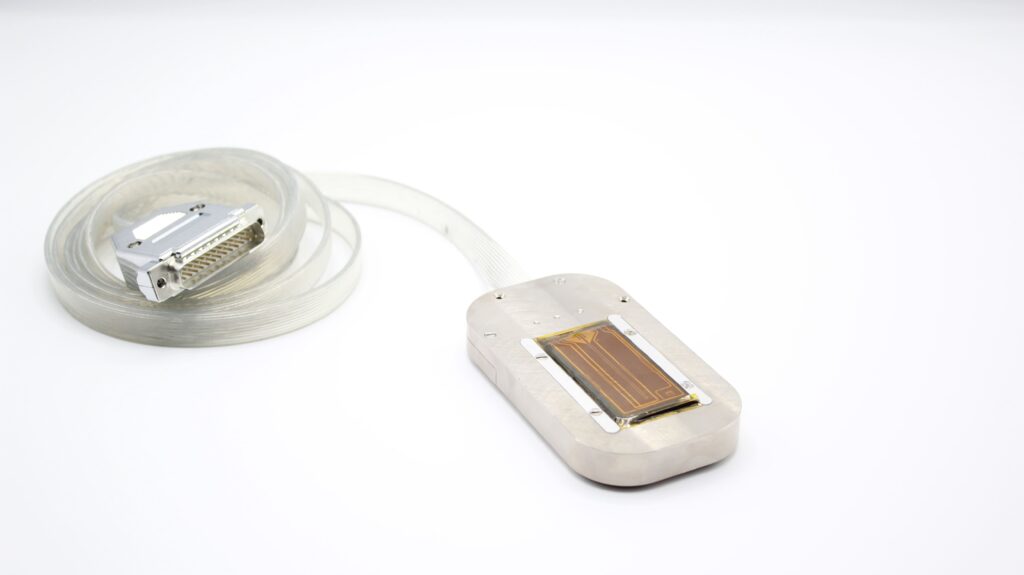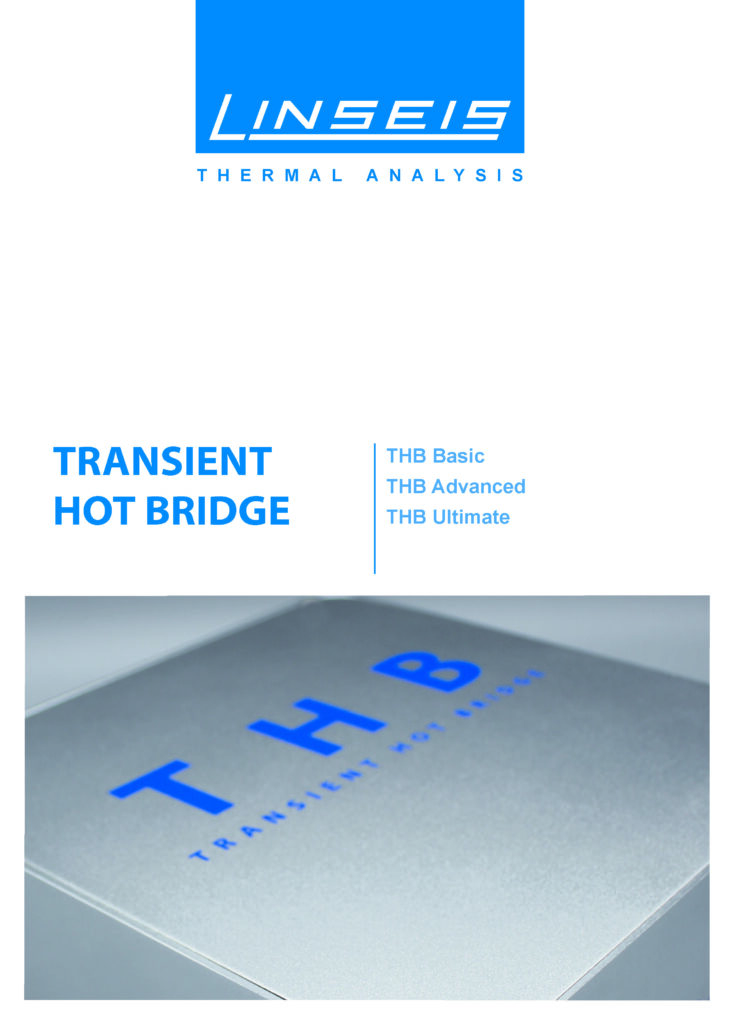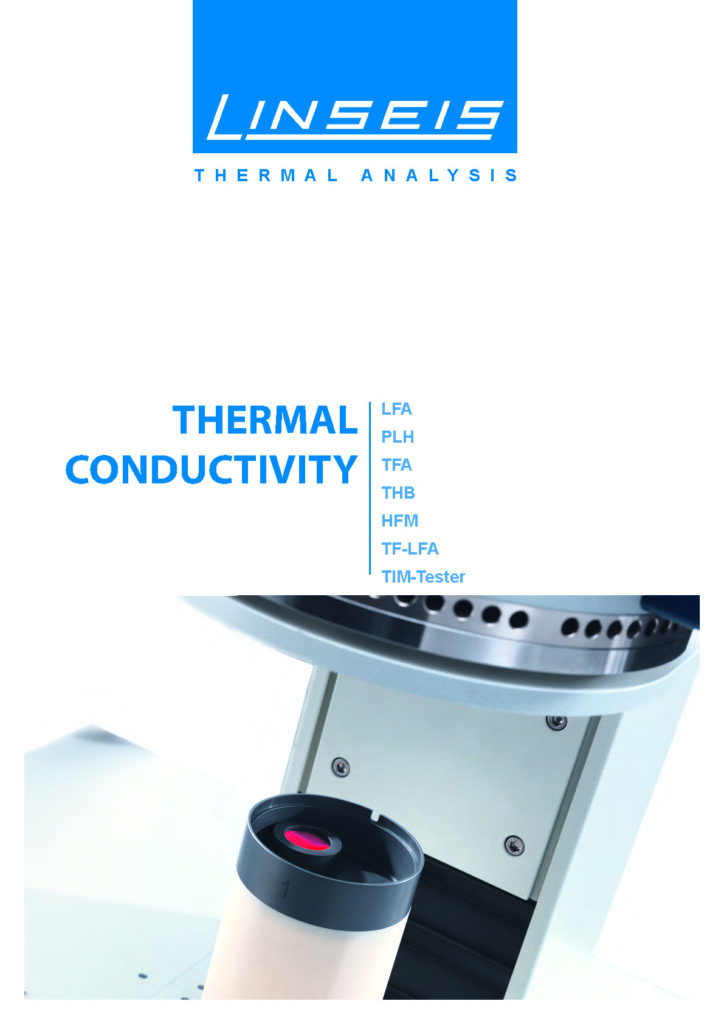Description
To the point
This measuring instrument simultaneously delivers the three material properties thermal conductivity, thermal diffusivity and specific heat after just a few minutes, regardless of whether you have placed the corresponding sensors in bulk solids, gels, pastes or plates or immersed them in liquids.
Sample preparation of solids is as simple as it is straightforward. One plane contact surface of each of two sample halves is sufficient for the sensor. Calibration is very simple and does not need to be performed before each measurement.
The THB (THB L56) measures absolute values with an accuracy that does not lag behind conventional plate or LaserFlash devices.
Advantages at a glance:
- Unsurpassed measurement accuracy for determining thermal conductivity
- One-button solution:
- Automated measurement mode
- No specialist personnel required to operate the instrument
- No erroneous measurements due to incorrect measurement parameter input
- Thermal conductivity AND thermal diffusivity
- Measurement of thermal diffusivity with very low measurement uncertainties
- Calorimeter function: Calculation of specific heat capacity
- Measurements within seconds
- Non-destructive measurements with half-shell sensor
- Compact dimensions
Complies to the following Norms: ASTM D 5930-01, DIN ISO 22007-2, ASTM D 5334.
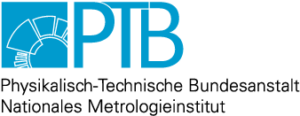
Developed in cooperation with PTB Physikalisch-Technische Bundesanstalt.
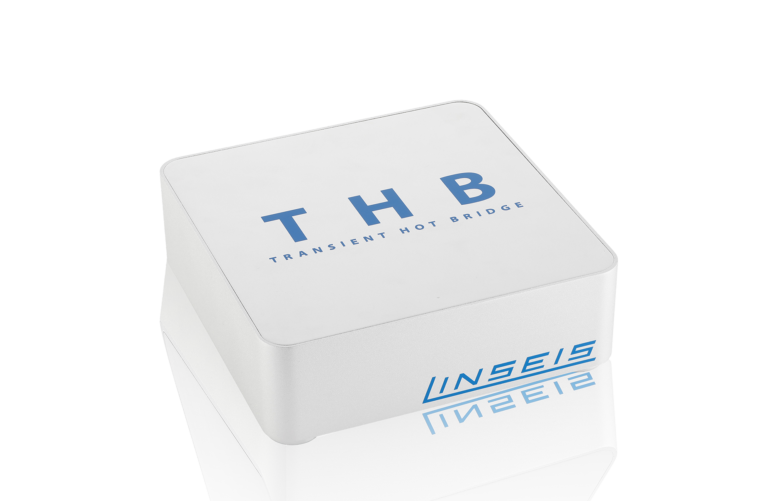
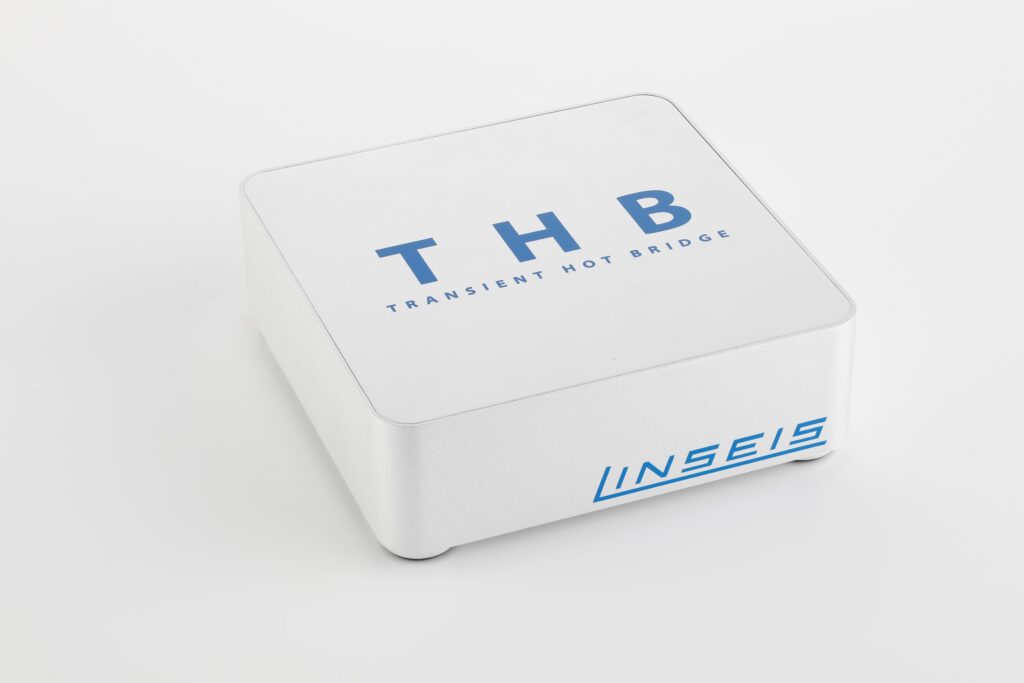
The new THB (THB L56): small and light, available with carrying case
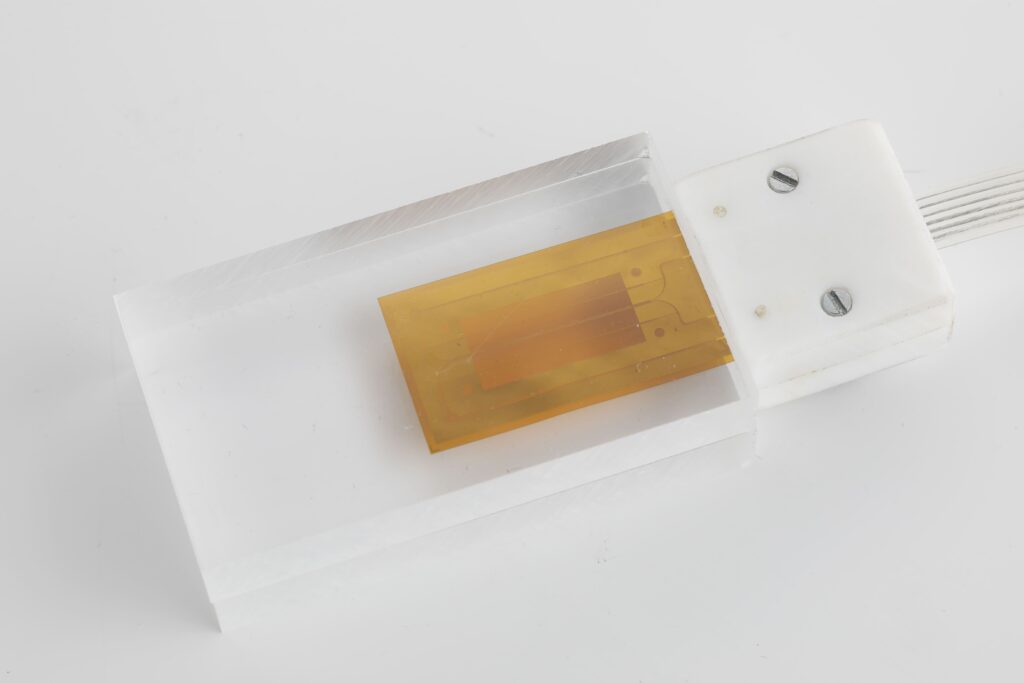
Various sensors for your application
Unique Features
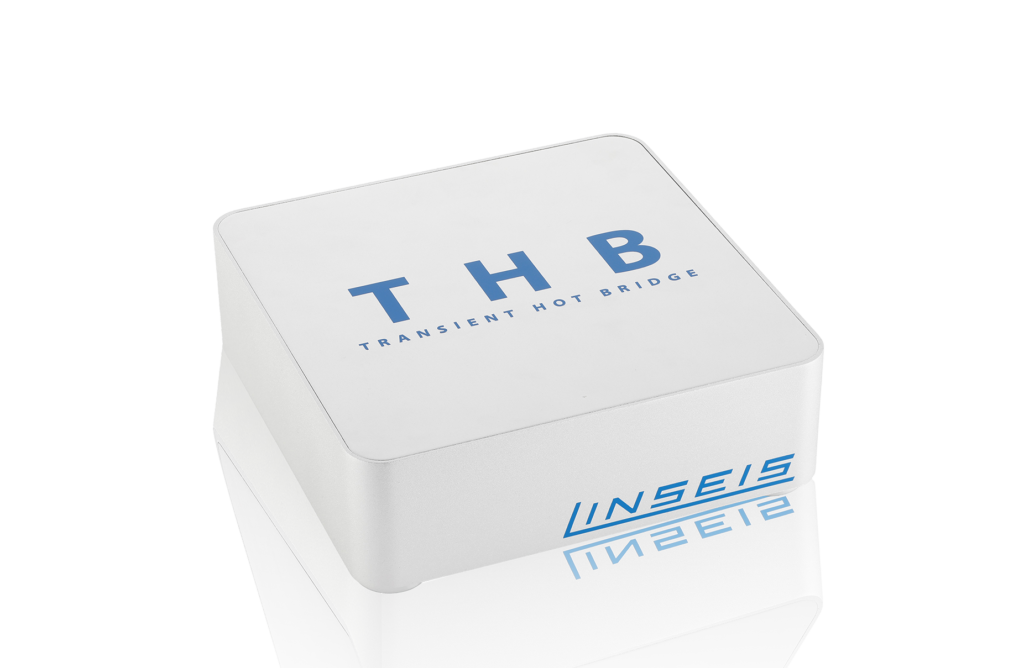
Modular design:
Adaptable to different
measurement requirements
Versatile sensors:
For different materials and applications
Wide temperature range:
For applications from
-150°C to 200°C
Easy handling:
User-friendly software and
fast measuring times
Questions? We're just a call away!
+1 (609) 223 2070
+49 (0) 9287/880 0
Our service is available Monday to
Thursday from 8-16 o’clock
and Friday from 8-12 o’clock.
We are here for you!
Specifications
Hard Facts
MODEL | THB BASIC (THB L56 Basic) | THB ADVANCED (THB L56 Advanced) | THB ULTIMATE (THB L56 Ultimate) |
|---|---|---|---|
| Measuring range: | |||
| Thermal conductivity: | 0,01 up to 5 W/(m*K) | 0,005 up to 500 W/(m*K) | 0,005 up to 1800 W/(m*K) |
| Thermal diffusivity: | 0,05 up to 50 mm2/s | 0,05 up to 300 mm2/s | 0,05 up to 1200 mm2/s |
| Specific heat capacity: | 0.1 up to 5 J/gK | 0.1 up to 5 J/gK | 0.1 up to 5 J/gK |
| Measurement precision: | |||
| Thermal conductivity**: | better than 1 % | better than 1 % | better than 1 % |
| Thermal diffusivity**: | better than 4 % | better than 4 % | better than 4 % |
| Thermal capacity**: | better than 4 % | better than 4 % | better than 4 % |
| Measuring duration: | |||
| Solids: | approx. 1 up to 10 min | approx. 1 up to 10 min | approx. 1 up to 10 min |
| Liquids: | approx. 1 up to 120 s | approx. 1 up to 120 s | approx. 1 up to 120 s |
| Operating temperature: | |||
| Sensor: | –150°C bis 700°C | –150°C bis 700°C | –150°C bis 700°C |
| Sensor type: | Kapton, Ceramics | Kapton, Ceramics | Kapton, Ceramics |
| Sample size: | |||
| Smallest sample size*: | 1.5 x 1.5 x 2 mm | 1.5 x 1.5 x 2 mm | 1.5 x 1.5 x 2 mm |
| Maximum sample size: | unlimited | unlimited | unlimited |
| * depending on furnace and sensor, sample size depends on material ** depending on sample sensor and sample preparation |
|||
THB sensors
SENSOR TYPE | MIN. SAMPLE SIZE | TEMPERATURERANGE | MEASURING RANGE | SUITABLE FOR**** | THB MODEL COMPATIBILITY |
|---|---|---|---|---|---|
| THB Sensors: | |||||
| THB/A | 20 x 40 x 5 mm | -150 up to 200 °C*** | 0,01 – 5 W/m*K | S | Basic, Advance, Ultimate |
| THB/A/Metal | 20 x 40 x 5 mm | -150 up to 200 °C*** | 0,01 – 5 W/m*K | S,P,L | Basic, Advance, Ultimate |
| THB/B | 10 x 20 x 3 mm | -150 up to 200 °C*** | 0,01 – 2 W/m*K | S | Basic, Advance, Ultimate |
| THB/B/Metall | 10 x 20 x 3 mm | -150 up to 200 °C*** | 0,01 – 2 W/m*K | S,P,L | Basic, Advance, Ultimate |
| THB/HT** | 20 x 40 x 5 mm | RT up to 700 °C | 0,01 – 1 W/m*K | S | Basic, Advance, Ultimate |
| QSS-Sensors: | |||||
| QSS | 25 x 55 x 3 mm | -150 up to 200 °C*** | 0,5 – 1800 W/m*K | S,P | Advance, Ultimate |
| QSS HT** | 25 x 55 x 3 mm | RT up to 700 °C | 0,2 – 100 W/m*K | S,P,L | Advance, Ultimate |
| Hotpoint Sensors: | |||||
| Hotpoint | 1.5 x 1.5 x 2 mm | -150 up to 200 °C*** | 0,01 – 30 W/m*K | S,P,L,G | Advance, Ultimate |
| Hotpoint HT** | 10 x 10 x 10 mm | RT up to 700 °C | 0,01 – 5 W/m*K | P,L,G | Advance, Ultimate |
| * The exact min. sample size depends on the material properties. ** High temperature (HT) version is based on a ceramic substrate, slightly reduces the accuracy. *** All maximum temperatures refer to operation under air. If Kapton Sensors are used in inert atmosphere the maximum temperature range can be extended from 200°C to 300°C. **** Solids (S) Liquids (L) Powder (P) Gases (G) |
|||||
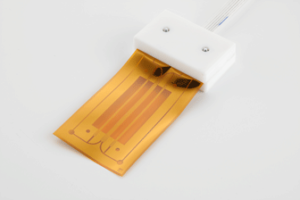
THB A sensor
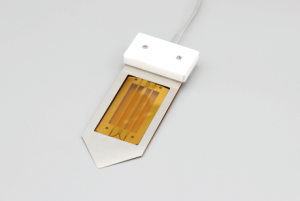
THB A metal sensor
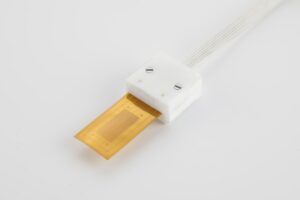
THB B sensor
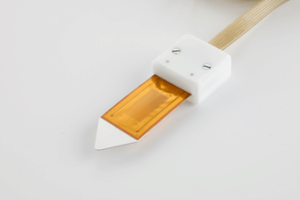
THB B metal sensor
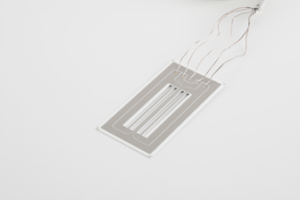
THB/HT sensor
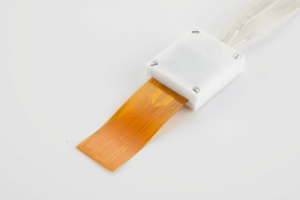
QSS sensor
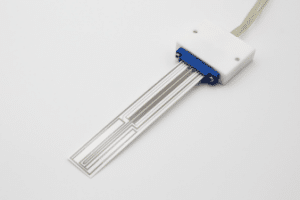
QSS HT sensor
Furnaces and climatic chambers
- Standard THB (THB L56) furnace – Peltier cooling (-20 to +50 °C)
- Standard THB (THB L56) furnace HT – with heating cartridges (RT to 200 °C)
- High temperature furnace (RT to 1000 °C)
- Low temperature furnace for large samples max. 60 x 100 x 30 mm (-125 to 500 °C)
- Furnace for controlled humidity (-20 to 80 °C)
- Furnace for liquids, powders and pastes (150 to 500 °C)
Further accessories
- Press for defined pressure on the specimen (test stand, handwheel operated up to 500 N, digital force gauge up to 250 N)
- Specimen holder for liquids
- Specimen holder for powder
- Transport case for the THB (THB L56)
- Various calibration materials (PMMA, titanium, tin, zinc)
Software
Making values visible and comparable
Advantages at a glance:
- Advanced THB Windows®-based software interface
- Provides the fastest measurement times
- No possibility for application errors thanks to optimized, software-controlled measurement algorithms
- Enables most accurate and time-saving measurements
- One-button solution: results at the touch of a button
- Easy data export to Microsoft Excel®

Applications
Application: THB Basic/Advanced (THB L56) – Phase change material – Thermal conductivity
The example shows the analysis of the thermal conductivity of two hydrated salts. At room temperature both PCMs were liquid. The liquids were filled into a beaker, which was placed in a tempered liquid bath. For the measurement the sensor THB/B/Metal was hung into the sample. The measured temperature steps were -20 °C, -10 °C, 0 °C, +10 °C, 20 °C (room temp.) and +30 °C, thus the measurement was started in the solid state of the material. Three measurement points were recorded at each temperature level and averaged.
The thermal conductivity of Sample A slightly increases with heating up to 0 °C, whereas Sample B shows slightly decreasing values. Both samples change from the solid to the liquid state in the temperature range from 0 °C to 10 °C which can also be clearly seen in the thermal conductivity drop. With increasing temperature, the thermal conductivity of both samples increases slightly. In general, Sample B shows higher thermal conductivities compared to Sample A.
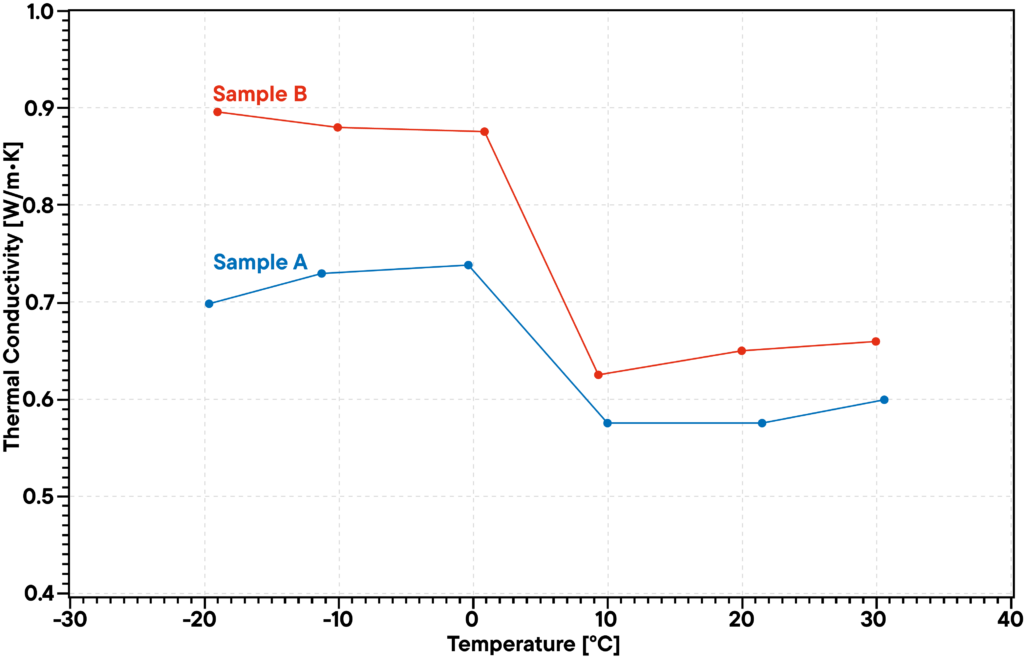
Well informed
